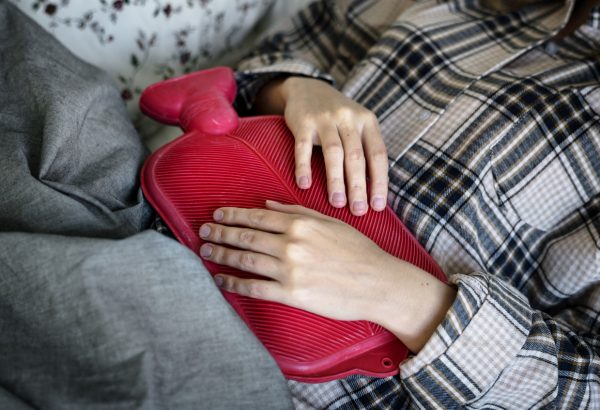What to Expect from Your Menstrual Cycle

Menstrual cycles tell women a lot about their bodies, so observing closely can give them insight on what their bodies may be communicating. The main function of a woman’s menstrual cycle is to prepare her body for pregnancy. When a woman reaches menopause, she no longer gets her period or produces eggs and hormones to become pregnant.
During a woman’s menstrual cycle, hormone levels rise and fall according to each phase of the cycle. These hormone fluctuations can be accompanied by changes in mood and energy levels (but do not necessarily cause them).
Your Menstrual Cycle Explained
Phase 1: Menstruation
The first day of a woman’s cycle starts when she gets her period. During this time, many women experience cramps, bloating and some pain. In some instances, women get severe headaches or fatigue. On this first day of the cycle, the uterus lining, which had built up to prepare for hosting a fertilized egg, begins to break down and is shed. This is the cause for the discomfort. Normal periods last between three and seven days.
Phase 2: Egg Formation
Phase 2 of the cycle occurs when the woman’s period ends. Hormones encourage the female ovaries to begin the process of creating eggs. During this process, a woman’s uterus begins to thicken to get ready to receive and nurture a fertilized egg.
During this stage, women may feel slightly happier than other times of the month.
Phase 3: Ovulation
When an egg is fully grown, ovulation occurs; the egg is released into one of woman’s two fallopian tubes and it then travels to the uterus. (Even though multiple eggs may grow in the ovaries, typically, only one is released per month.) A woman is most fertile during the ovulation time window of 12-24 hours, while the egg is travelling from the fallopian tube to the uterus. Should a sperm come into contact with the egg within this ovulation window, the sperm can fertilize the egg and the woman may become pregnant. The ovulation process may cause a spike in a woman’s sex drive and her happier mood may continue.
Phase 4: The Luteal Phase
The luteal phase is considered the end of a woman’s cycle. The egg has travelled to the womb and the female body then produces the progesterone hormone, which further aids in building up the uterus lining to provide necessary support for a fertilized egg. However, if the egg fails to fertilize, the uterus doesn’t need the extra lining in the uterus, and the lining will prepare to break down (in preparation for returning to the first phase of the menstrual cycle). Premenstrual syndrome (PMS) is most likely to occur during this phase, a time in which many women tend to feel more emotional, irritable, vulnerable and sensitive. Perhaps this is why many women crave chocolate or why they feel the Kleenex needs to be closer than usual this month!
By understanding these natural body phases, you may have better insights into your feelings. You may be able to tune your lifestyle to support your health and your mood during these stages, by getting the right diet, exercise, rest and encouragement from friends, and managing stress.
Disclaimer
This information is not intended to be a substitute for professional medical advice, diagnosis, or treatment. Always seek the advice of your physician or other qualified health provider with any questions you may have regarding a medical condition.



